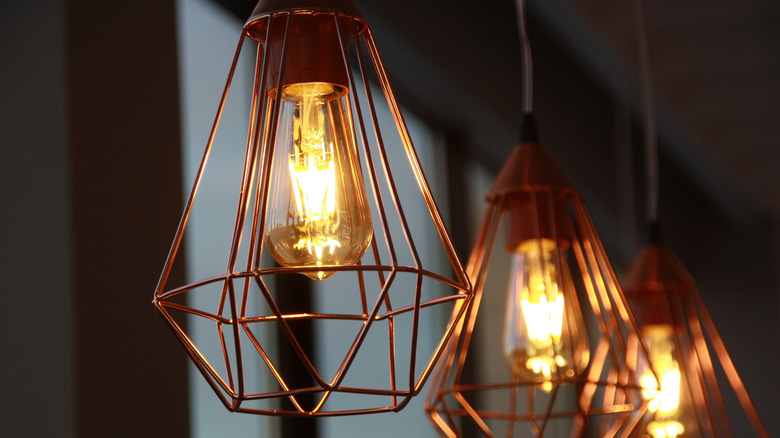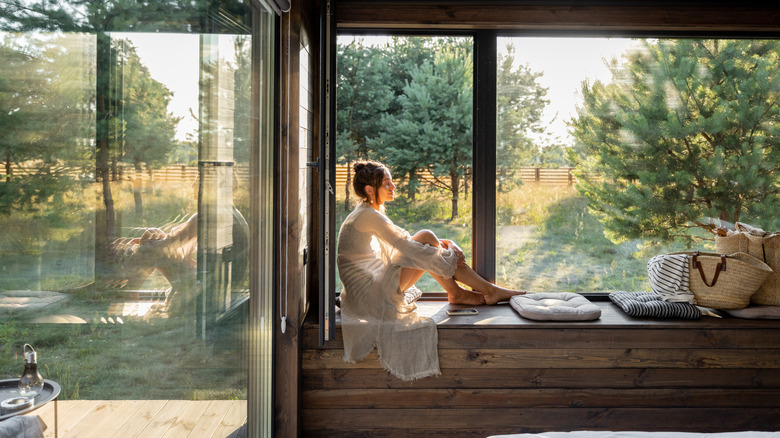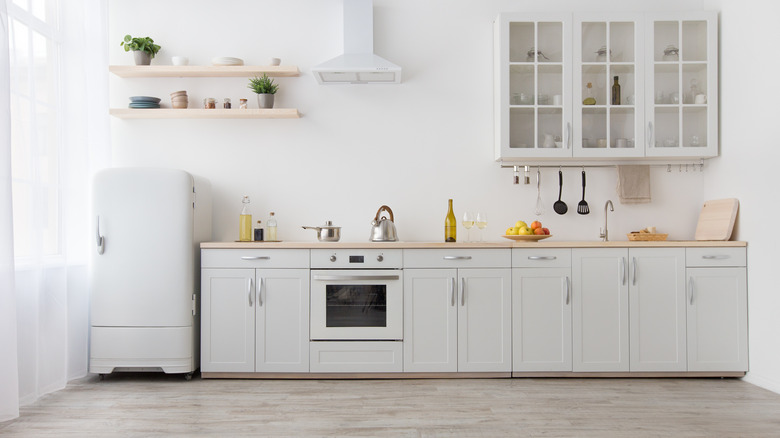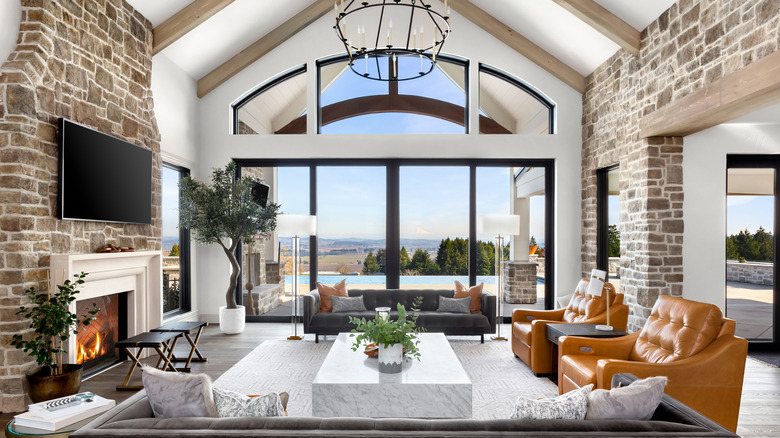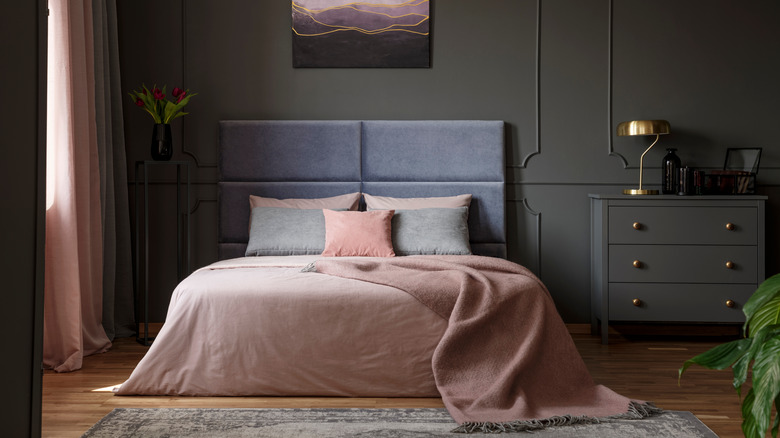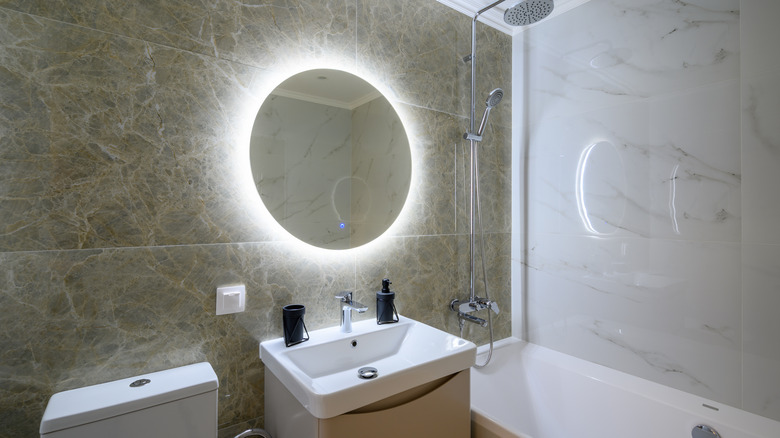5 Tips For Getting Good Lighting In Every Room In Your Home
Is your house feeling a bit tired? You might even have only been there for a couple of years, but for some reason, it just doesn't feel quite as fresh as you remember it being. So what is it? Well, it might be your lighting. Lighting is one of the main factors that keep a space looking up-to-date, and it is often a driving force behind why a buyer decides to purchase in the first place. For example, did you know that window size can affect the value of a property (via Elemental Green)?
Yes, perhaps it is time for an upgrade. And you have multiple concerns about where to best address these deficiencies. Bedrooms, the kitchen, the living room — lighting can become a full-scale renovation project if you really start to think it through. But we are here to simplify, so here are five critical areas to focus on when taking a hard look at the light quality in your residence.
1. Capitalize on the natural
Working with natural light is the most cost-effective and simplest way to give your home an immediate facelift. Open or remove curtains entirely or crank up the shutters. Lighten the window treatments. These are details worth investigating, especially if your property is an older build. You will be surprised at how different your house feels when you allow as much natural light in as possible. Non-natural light has been proven to damage mental well-being, as well as increase the chance of gaining excess weight, as noted by NewInHomes.
In fact, improving the natural light is both a personal and financial benefit in terms of saving on an electric bill. On top of that, these tweaks will improve your ability to concentrate for extended periods of time. Studies have even shown that additional sunshine in a home can help aid in achieving the best night's sleep, according to Elemental Green. It is helpful to address natural light first so that you have a strong baseline of what kind of lighting you are working with.
2. Freshen the kitchen finishes
The kitchen is the heart of the home, so if you find yourself wondering why this room, in particular, looks so dark, it may be time to update some finishes. Over the last 20 years, the preferred aesthetic of the kitchen has changed dramatically. Gone are the Tuscan and old-world features of the Mediterranean home that created a dark and moody ambiance.
These materials, such as earthy and darker-toned granite countertops, as well as dark mahogany wooden cabinets, all absorb light, as noted by Williams Kitchen & Bath. That's right — the lighting in your kitchen may not be the main reason it feels so dark! Instead, it is helpful to update with light and bright kitchen finishes that will give your space that airy and fresh vibe. For example, it would be best to swap out that beige granite countertop for white quartz, and perhaps those original cabinets from 2005 could benefit from a fresh coat of warm white paint.
3. Create a living room moment
The styling and functionality of a living room are often centered around lighting. Building the area around a large fixture can create a strong focal point out of it, especially given the size of the space. Mid-century geometric pendants are popular choices and are also aesthetically up to speed with what is in style. If you want the center of attention to be the furniture, recessed LED lighting is a great starting point to ensure consistency, as noted by Lightology. Going with a more subdued choice will allow your room to show off the furnishings accordingly while remaining lit.
With that said, it is important to conduct an honest assessment of the overall living room lighting once that central, key illumination system is in place. That main lighting will expose your remaining weaknesses. For example, a reading chair will likely benefit from a small table and reading lamp, and corners are other areas that often require tending. If natural light is not cutting it, a dramatic and statuesque corner lamp may be exactly what is needed.
4. Set the right color temperature
Bedroom lighting is an opportunity to add dimension and nuance to your space. With your main overhead lighting source, there are a couple of key details to keep in mind. Firstly, it is important to pay attention to the room's color temperature. This might sound trivial, but it can dramatically impact the feel of a bedroom. The concept is based on what is called the Kelvin color temperature scale, which suggests that you want to avoid cool bulbs in order to keep a space inviting and cozy. Instead, Lighting Tutor suggests recess lighting that is at least 3000K.
Table lighting plays a key role in adding to these finer details. Whether it be the nightstands for a late-night read or a table light for vanity, it is important that these spaces are well-lit. When it comes to the Kelvin temperature scale, it is recommended to illuminate these spaces at just over 2500K. Neglecting these parts can risk your bedroom feeling unfinished and lonely.
5. Mirrors matter
Mirrors are an incredible way to easily brighten the space and make your light work for you. If your living room lacks those big windows and only allows for modest lighting, place a statement mirror on the wall on the opposite side of your furniture. You will be amazed at how much bigger and brighter it makes the room feel. Bedroom mirrors are typically best served directly across from the bed. They're a nice counterpoint to a piece of furniture, the bed, which takes up a significant percentage of the room.
Bathroom mirrors are a must, and with today's design standards, most people are opting for LED lighting. This is one of the most common interior upgrades being made today by homeowners worldwide, according to PureWow, which also adds value to the house. Utilizing the techniques mentioned are great ways to not only boost the light within your home but also increase the perceived size of the property.
